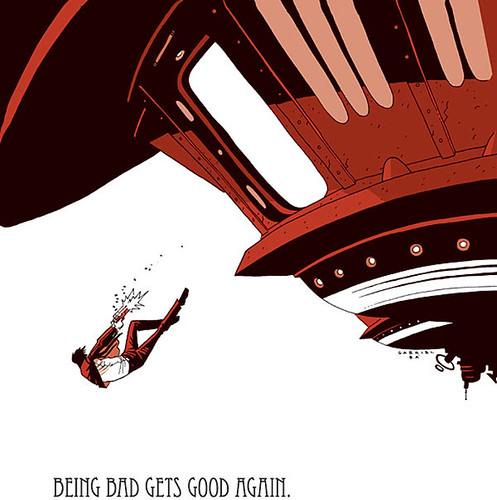Hyperreality @ Wikipedia
Hypermodernity @ Wikipedia
I'm beginning to wonder whether the development of the hyperreal in art has any connection to the rise of supermodern architecture. Both are depictions of some beyond the reality of old. The supermodern in architecture invokes a simulated reality as it transposes context and places of rest with contextless and movement-oriented designs. Part of this has to do with the rise of the internationally recognized architect who receives bids and commissions from around the globe. Another part has to do with the business classes who travel from city to city to experience the same hotel rooms, the same airport terminals and the same rented cars on the same highways as the place they would call home. All of this, from the detachment of architecture from context to the building of simulated worlds for the business class to travel through are, in many ways, part and parcel with the ideas behind hyperrealism. The original reality become less important as the simulated one replaces it for those who actually do travel from country to country on a frequent basis. Home becomes the movement through things and a house becomes just another space to move through.
While the hyperreal in art offers a detailing of reality beyond the capability of the human mind to do by itself, it also offers a simulated reality that presents itself as somehow 'more real' than reality. How this interplay between the original and the simulation will play out in the future is something that cyberpunk writers have asked for years.
William Gibson, in describing an American's view of London as a sort of mirror world in his book Pattern Recognition, touches on that aspect of the hyperreal and the supermodern. Cayce goes from London to Tokyo to Moscow and finds the same stores, the same clothing, the same designs and the same sense of fashion. It's a simulated unity of the world through shops and attire, but then again, as Benedict Anderson argued in Imagined Communities, any identification with a group of people you have never actually met is a simulation of unity.
Viewed in this light, nationalism is the first kind of hyperrealism, as it asks us to deny the reality we see and accept that we are unified through common language, ancestry and history despite not needing to know the rest of those you are 'unified' with. Nationalism also asks us to accept the mobility of jobs and the ability to transplant one worker from one city to another, as Ernst Gellner would argue. The spiritual unity sought by the Germans and the Italians after their political unification in the 1870s could only be a simulated unification, an imagined one. Thus nationalism crafts a simulated united between people that doesn't exist in the everyday world.
Sunday, February 17, 2008
The Supermodern as the Hyperreal as the Imagined Community
at
9:47 PM
![]()
Labels: hyperrealism, nationalism, reality, supermodern
Subscribe to:
Post Comments (Atom)



No comments:
Post a Comment